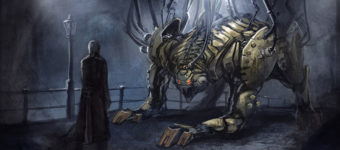
Interview With Tomek Larek: Polish Illustrator & Entertainment Artist
Tomek Larek is a highly skilled artist currently working as a freelance illustrator. His work appears mostly in games and related entertainment where his style varies drastically based on the project.
In this interview Tomek shares his journey from working in advertising to switching over to the freelance lifestyle. He now travels the world working as a freelance illustrator and he’s loving every minute of it! Hopefully this interview can give you some insight into the life of an illustrator along with practical tips for newer artists.
To learn more about Tomek you can visit his portfolio site which also includes plenty of work samples from character designs to storyboards. He also has a Facebook page for his artwork along with a wildly popular ArtStation showcasing his latest works.
When did you first start drawing and what got you into drawing as a serious career?
I started drawing as a child copying my older brother. The difference between us was that he quickly grew bored of drawing. But I never did.
I was filling every empty piece of paper with space ships and pirate stories. But for a long time I have not treated art seriously. Not till I had to choose a faculty for my studies.
I decided on the Fine Arts Academy where I studied design and scenography. But I truly disliked painting and drawing classes. I took every opportunity to skip them.
After getting my degree I worked in advertising as an Art Director practically never touching a drawing pencil during that time.
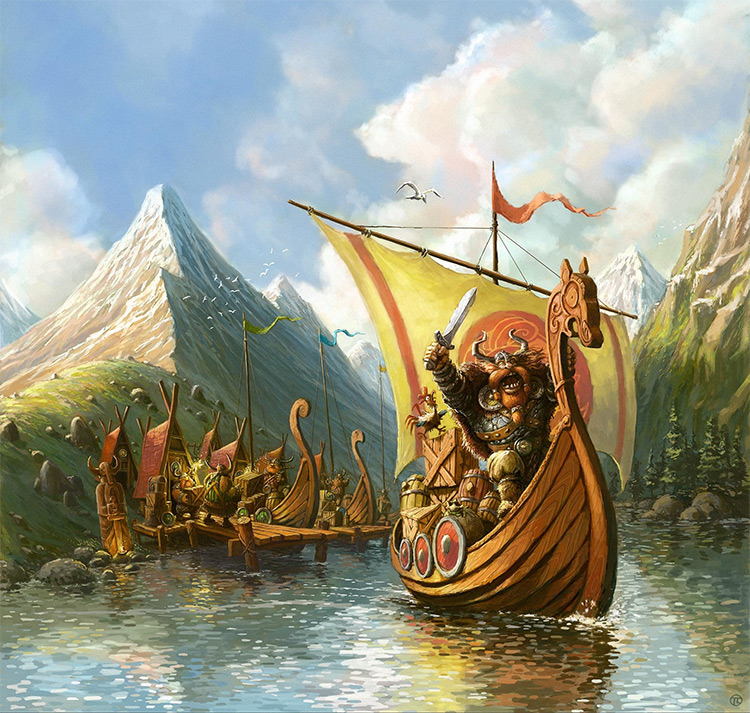
I made some attempts to draw comics, following my fascination of Belgian and French comics, but with my work at the advertising agency I failed to finish any of them.
Years passed. One day me and my partner decided to leave everything behind and travel around the world. During that 4 year journey, for the first time in many years, I came back to drawing for the pure pleasure of it.
Most of my illustrations accompanied the writings of my partner, Maugoska, shared in our travel blog. Those illustrations gained attention and I started getting proposals for book cover illustrations.
Those were completely spontaneous job opportunities. I myself had concentrated all my energy on personal projects like, to name one, an illegal mural in Istanbul.
After our return to Poland I didn’t feel like coming back to the advertising agency. Encouraged by those spontaneous projects I decided to try my hand as an illustrator. That decision was also a result of our lifestyle.
We didn’t want to be attached to one specific place and we wanted to work as freelancers from any place in the world. Right now, for instance, I’m writing from Tenerife where we’ve been for the past four months avoiding the winter weather in Europe.
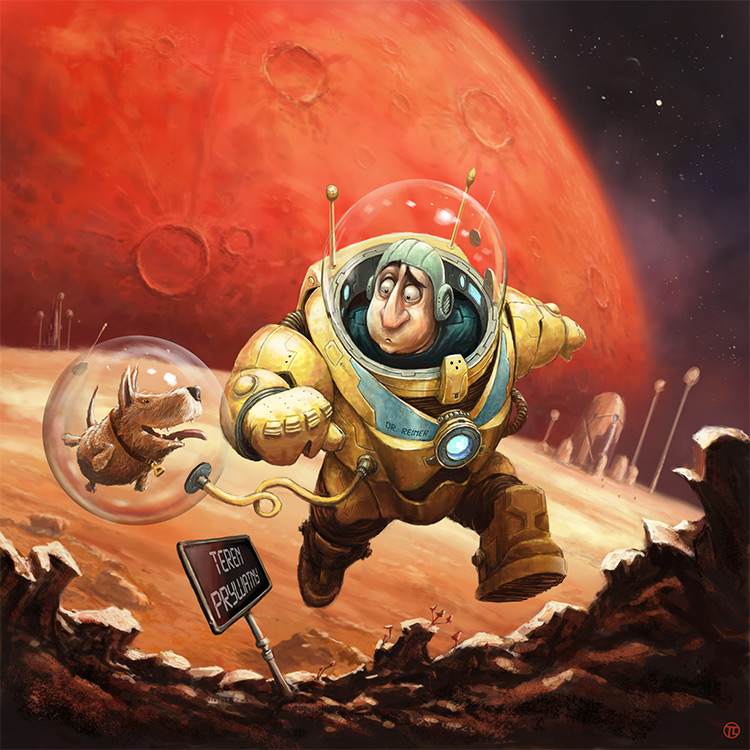
What were your earliest paid gigs? Were you able to sustain yourself as a professional artist?
My first paid work I did as a child. It was a spaceship drawn on the Matchbox car. I sold it to my brother. He needed it for the science-fiction story he was writing.
I was in charge of coming up with the space ship and crashing it on the first met planet, only to play with coming up with a new one.
But the beginnings of my professional illustrations were not that easy. After coming back from our journey we were completely broke. For a while I had to work in my old advertising agency, drawing my first illustrations at night.
I had a lot of luck because one of the board games publishers reached out to me. A friend of mine who worked with them saw my illustrations online and convinced them to give me a shot.
That same year I made eight illustrations for them and started to build a portfolio. But that was a difficult time when I was taking every job offered, in fear that in a few months I might not have any. But I guess freelancing always comes with that uncertainty at the beginning.
It helped that I was not entering the profession as an absolute beginner. Thanks to Fine Art Academy I already had a good set of skills and the ability to deal with any subject. I could easily switch between drawing medieval knights and amusing animals for kids or explore character art, anything that I truly like.
Each of the board games projects were like playing a game for me, offering a lot of fun and another challenge.
So staying up all night to draw was more disturbing for my partner than for me.
I was also fascinated by learning new techniques.
It’s only been three years since I touched a Wacom tablet for the first time.
How do you typically find client work? Are they mostly repeat clients or do you get a lot of messages from new clients too?
The first publisher interested in my work became my regular client.
It was not a lot of money but the publishing house was very dynamic, showcasing their board games with my illustrations in fairs all over Europe. I was also drawing in very different styles from children board games to games for older players.
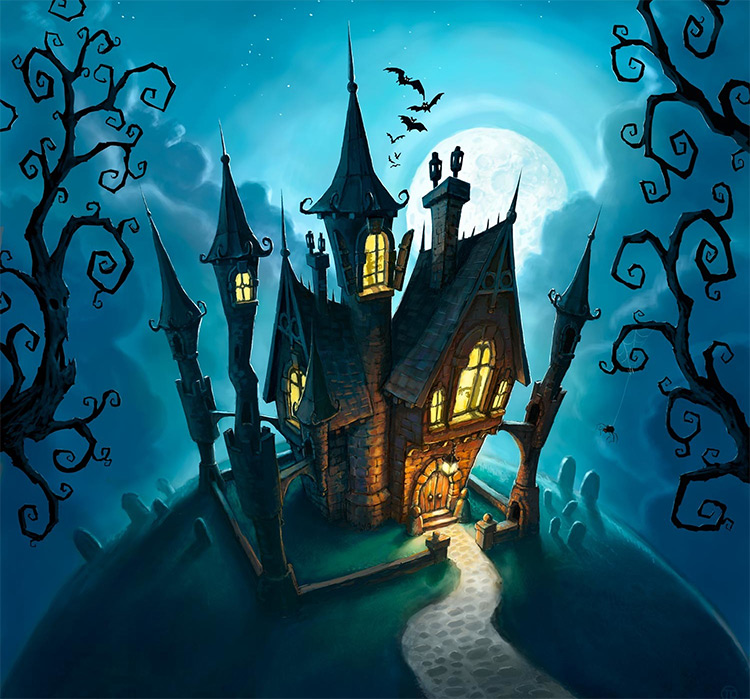
Other publishers noticed the spectrum of my illustrations and became interested in my work.
However I’m still just a beginning illustrator.
I started my career as an illustrator less than four years ago. Currently I work on a regular basis with two publishing houses from Poland, and one from Canada, but I have to admit that those publishers appeared without me reaching out.
It would only be fair to say that I have not actively looked for work. Every month I get more e-mail requests for illustrations from different parts of the world. Many of those are not very interesting, but from time to time I get something worth doing.
As a result three years have passed and despite my willingness to send my portfolio to bigger and more important publishers, I simply do not have time to do so. And in the meantime more interesting work proposals keep coming my way. I guess I’m just lucky!
I do however lack time for pursuing my personal ideas for tales and illustrations. The merit, but also a problem, is that I travel a lot with my partner and I decided to limit my workspace to a MacBook Pro and Wacom tablet.
The world is so fascinating and is more often than not pulling me away from drawing.
To have two passions with just one life is not the easiest path!
What were some of your biggest challenges while trying to become a professional artist?
Hm…. perhaps the biggest challenge for me is time management.
It seems to me that discipline and a well-executed work schedule are both very important. It often happens that the whole day goes by and all I did was reply to potential client e-mails.
I try to stick to a rule that even if I know I won’t take the job, I should still reply and explain why I can’t take that project.
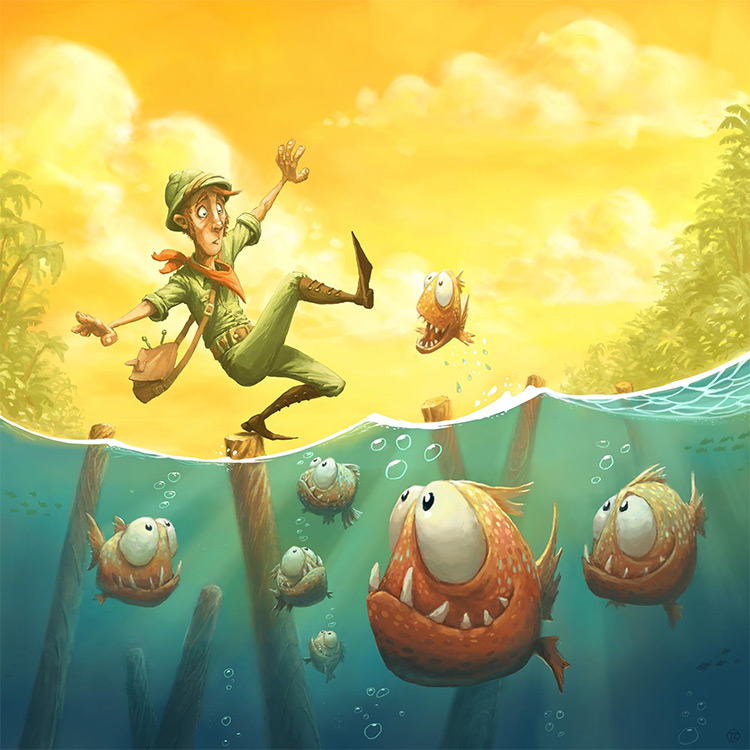
Second biggest challenge for me is making right decisions. A paid job shouldn’t always be prioritized. You need to take care of your energy and imagination, and more than anything make time to do your own personal projects. That way you can preserve the freshness of your work and sustain your passion.
Your personal projects give you the ability to look at the commercial work from a distance. And they allow you to keep learning new techniques and mastering your style.
I actually think the biggest challenge for me is being my own boss. Usually I’m very strict with myself but often I show a lot of indulgence, especially when it comes to the aforementioned discipline!
Luckily that’s where my girlfriend helps me. I wish I had a manager like her.
Which tools/software do you use for digital illustrations? Are they mostly digital paintings or do you also do photobashing or vector art?
My basic setup is a well-configured MacBook Pro and a Wacom Intuos 5.
It’s a compromise between the life of an illustrator and a life on the road. Those two passions are a bit in competition with each other. But I’m eager to try the new Tablet Wacom Cintiq Pro 16″, it has potential to be an ideal compromise between size and mobility.
We’re preparing a small camper van so we can have a workspace for two people in it(my partner is a graphic designer). We have to equip it with comfortable mobile desks & chairs, as well as fair amount of solar panels to charge our computers.
Our dream is to be able to work remotely anywhere. Overlooking the cliffs in Norway or the mountains of Patagonia.
When it comes to software my basic program is Photoshop. But it’s also very important for me to keep drawing on paper.
I try, despite the fact that it takes more time, to start every commercial project from a pencil sketch. I scan that sketch into my laptop and that’s where the digital illustration gets its fundamentals.
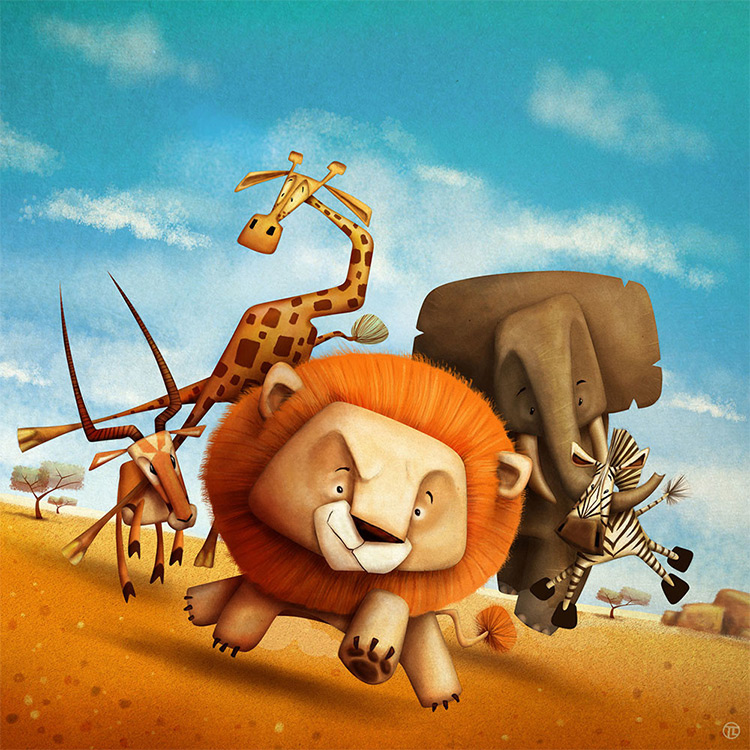
But I very much like when one can see a bit of the original sketch coming from under the digital color overlay. It gives an illustration some analog character. I believe it’s a value that many digital artists forget about.
In regards to photo bashing, I value most my own skills and craft abilities. I understand that photo bashing speeds up the creative process and offers increasing realism. But with my style hyperrealism is not so important.
I prefer to rely on my skills and be in a situation where the speed of my work depends on my skills, not the set of photos on my external drive. I practice speed painting but with the goal of finding a way to draw something better rather than replacing that thing with a photo.
Vector illustrations are rare for me. I don’t like them because they require much more precision and a certain type of synthesis in thinking. But I can draw those types of illustrations as well.
Experience gained as an Art Director in advertising allows me to be flexible and freely move between Adobe programs, so if the project is interesting I’ll take it.
Do you think someone could become an illustrator/concept artist mostly working from imagination? Or how valuable is life drawing when it comes to illustration, exaggeration, and fantasy/imaginary artwork?
All that is created in our imagination is rooted in the real world. In order to draw a great fantasy illustration, or even an illustration for kids, it’s important to be aware of the laws of physics and nature.
When you draw crazy artwork, even the most intricate costume or space suit, you need to know what fabric it’s made of and how it will bend/fold. You have to be aware of how light reflects off fabric, metal, or plastic, how it reflects on the ocean waves or against a woman’s cheeks.
Even if you draw a magician that breaks the rules of physics you have to look into nature to see how the light from his magic ball reflects realistically against his face.

Another thing is practicing anatomy and being aware of how a human being, an elephant, or a tiger is built. This gives us more possibilities to create fantasy monsters.
In my opinion that knowledge is very important. If I only have a small amount of time I try to sketch from nature or from reference pictures. All of that knowledge is necessary to study the surrounding world and be able to filter it through my brain to create a world in my imagination.
Of course I know incredible illustrators, especially those drawing for children, who take ideas mainly from their imagination and do not need realism. Or they use 3D software and photo bashing in their concept art to strengthen the realism.
But I believe that studying life and nature is absolutely necessary to let your imagination fly.
Illustrators should never stop learning. Every new illustration or task is a new challenge and requires studying that task, but also observing the world around us. All that surrounds us is painted by the light and only through observing the light in nature can we create realistic illustrations from our imagination.
Perhaps I have a bit of the old school approach, but I believe that every illustrator should be able to draw an inflated duck and a horse 🙂
Drawing is constant observation of the world.
What advice can you give to younger artists just starting on their artistic pursuits?
As I said, I am at the beginning of my career as an illustrator myself!
But from my experience I recommend drawing as much as you can and showing your images wherever you can.
Social media gives us possibilities that we could only dream about 10-20 years ago. It gives the potential to reach people that might be interested in giving us work. It also offers the possibility to learn from the best artists worldwide.
But more than anything my advice is this: draw, draw, and then draw some more… and never give up. And at the same time be a harsh critic of yourself and honest when it comes to your own skills and abilities.
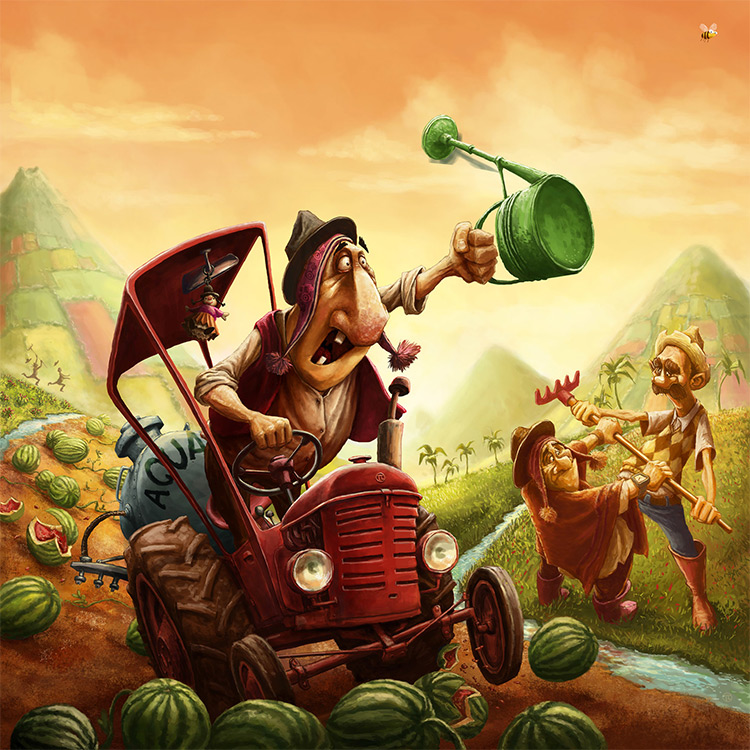
A good way to check where you are in your craft is to get a constructive critique. Take part in challenges organized on ArtStation or Facebook&emdash;two amazing communities full of talented artists.
Aside from that, just believe in your own imagination. Don’t just copy what others do.
You can recognize a good illustrator not by the ability to faithfully copy somebody else’s photo or style, but by the pictures that he or she has in their head and how he or she translates them onto the paper or computer screen.
A very special thanks goes out to Tomek for his time and patience with this interview. His journey is so inspiring and it proves that you CAN keep consistent work as an artist if you’re good enough.
You can see more of Tomek’s artwork on his ArtStation page with varying styles and new pieces added sporadically. His artistic style and his success in professional illustration should prove inspirational for anyone looking to follow a similar path.




